Worried about the health of the baby, parents are interested in whether it is possible to introduce tea into the children's diet. It depends on the age of the child and the types of tea.
For human health, tea is a healing drink that has a beneficial effect on the adult body. Tea has a different effect on a small body.
Tea is a source of vigor and energy. The kids have plenty of energy. Therefore, extra “recharging” can play a bad joke on the child. The drink will disturb sleep, which is why the child will always be awake, even when he should be sleeping. Tea is definitely contraindicated for babies.
The drink quenches thirst. For children, drinking performs the function of nutrition, i.e. special drinks are selected that contain a sufficient amount of useful and nutritious substances for the baby. Regular tea will not work in this case.
Hence the conclusion: not everything is as beneficial for children as it is for adults.
Tea can be given to a child when he is 1.5–2 years old.
Consequences
The consequences of early consumption of the drink occur gradually. Sometimes they can go unnoticed. Over time, the following symptoms appear:
- all kinds of allergic manifestations in a child;
- excessive nervousness, excitability, hyperactivity, restlessness;
- nightmares, poor sleep or lack thereof;
- unfocused attention, forgetfulness, poor memory, poor academic performance;
- tannins in the drink negatively affect the development of the baby’s cerebral cortex;
- caffeine provokes the occurrence of diseases of the cardiovascular system.
Each baby’s body is individual: early introduction of the drink as a daily drink affects the health of the body in the future. It is recommended to give tea to children at a certain age and with the approval of a doctor.
Introducing your baby to tea should be as safe as possible. By following these recommendations, drinking will have the least harm on your fragile little body.
- You can give tea to an infant if it is a special drink, it does not contain caffeine, and the packaging indicates at what age it is allowed to be consumed. This drink is safe and can be purchased at a specialty store. However, the child may not like it. If it turns out that your baby is stubborn and doesn’t want to drink it, don’t force it.
- Tea for adults is recommended to be given no earlier than 2 years of age.
- It is recommended to start with black varieties with the addition of fruits or berries. Carefully monitor the composition: there should be no caffeine and tannin.
- Stop using bags. They contain harmful impurities that cause allergic reactions, and the quality leaves much to be desired. It is recommended to drink a freshly brewed drink. After 1 hour, the amount of beneficial substances in the remaining tea decreases, and with repeated heating, compounds harmful to the child’s body are formed.
- The brewing technique is strictly taken into account, since non-compliance with it negatively affects the functioning of the baby’s digestive tract.
- The brew should be weak, with a light brown tint.
- This drink is introduced gradually: for the first month, only one cup of the drink is given for breakfast. Then monitor whether the baby liked drinking the tea and what the consequences of drinking it were. If the child has become hyperactive and refuses to sleep during the day, delay introducing this drink or make the brew weaker. If nothing like this was noticed, give your child water during the day after sleep.
- You are allowed to sweeten the drink a little.
- Herbal teas require special care. Chamomile, mint, rose and St. John's wort cause severe allergies.
- If your child has developmental pathologies or illnesses, delay introducing a new drink.
Each variety has its own characteristics: a certain concentration of basic substances that have different effects on the child’s body.
Types of tea for children's drinking
A certain variety has its own characteristics: composition, processing method. Because of this, the introduction of a new drink into the children's diet will also be different.
- Black is the most common and popular variety that is recommended to be given to a child. A high-quality drink, in moderate doses, without additives and weakly brewed, will give the baby strength and energy for the whole day without consequences for the body.
- Green is the strongest variety due to the high concentration of caffeine and tannin. To avoid undesirable consequences for the baby’s body, it is introduced into the diet last. It is recommended to give to children over 10 years old if they do not have pathologies. It is better if its use is postponed until puberty, when the body is formed and strengthened.
- Hibiscus. It does not have pronounced properties that tone the body, so hibiscus, along with black tea, is allowed to be introduced into children’s diets from 2 years of age. Hibiscus is rich in vitamins that strengthen the baby’s defense system, relieving him from infectious diseases and colds. However, hibiscus contains a large amount of citric acid. If a child has an allergic reaction to citrus fruits, it is recommended to refrain from drinking this drink.
- Lime. Adherents of medicinal plant therapy are recommended to give their child linden tea from the age of 6–7 years. This is explained by the fact that even in the absence of caffeine, the drink harms the baby with an excessive amount of beneficial substances. To avoid this “oversaturation”, it is recommended to drink the linden drink as medicine for nervous and cold diseases. Regular consumption of linden drink provokes allergic reactions.
- Peppermint tea has a beneficial effect on the adult body. For children, tea from this plant can provoke a skin or food allergic reaction. Therefore, before introducing it into your baby’s diet, consult your doctor.
- milk neutralizes the effect of tannin, thereby reducing the risk of hemoglobin surges;
- milk neutralizes oxalic acid, preventing the leaching of calcium from tooth enamel;
- Tea pigments do not affect tooth enamel.
Supplements
Sugar, lemon, honey, milk, etc. are added to tea. This is usually done to make the tea tastier. For children, supplements play a more significant role.
For example, if you add milk, the effect of harmful substances in the drink is weakened. Tea with milk is included in the menu of kindergartens and hospitals. Nutritionists recommend maintaining a 1:1 ratio. This is due to the fact that milk has a special effect on the substances found in tea:
Welcome to add dried apples, dried currants, rose hips, raspberries or strawberries. A small amount of herbs (chamomile, linden, mint) will benefit the child’s body.
If the child has already grown up, then the choice of drink depends on the variety. Black tea is the most best option drink that is recommended to be included in the diet.
The amount of drink should be moderate, prepared according to certain rules, so as not to harm the baby’s body.
Give your baby a new drink after consulting with a specialist. If children have chronic kidney diseases and pathologies of the nervous or urinary system, delay drinking tea or introduce it into the children's menu with extreme caution.
Do not deprive your baby of a healthy drink, but make sure that the tea does not cause harm, but benefit.
For the first few months of life, a child consumes only one product: breast milk or artificial milk formula. Further, as he grows older, new foods and drinks are introduced into his diet. The question of the usefulness of certain dishes, their availability for the child’s body, their possible benefits or harm. Here we will talk about whether it is possible to give a child tea and what kind.
It would seem that nothing is simpler. Place tea leaves or tea bag on a mug of boiling water, a little sugar or milk for taste. The recipe is simple, but sometimes adults don’t even realize that the foods they are used to can be undesirable and even dangerous for an immature digestive system small child.
First of all, you need to decide what kind of tea you can and cannot give to your child.
After all, there are a great many types of tea:
- white tea,
- black,
- red,
- green,
- yellow.
The processing of tea determines its color.
Tea contains both beneficial (potassium, magnesium, calcium) and harmful substances for the child. The latter includes, first of all, caffeine, the content of which in tea is no less than its content in coffee itself. This substance can disrupt a child's sleep pattern, because, as we all know, caffeine has a stimulating effect on nervous system, which is completely undesirable for small children. It is important to remember that green tea contains more caffeine than black tea.
The best option for kids is black tea with a small amount of tea leaves (that is, weakly brewed) and with the addition of milk. You should not offer your child tea before bed. Drinking tea (any kind: green or black) should wait until three years – It is extremely undesirable to give tea to a child before.
Recently, special children's teas have appeared on the Russian market.. They can be given to a child from six months old, in small portions, weakly brewed. You can also offer your child lemon balm or fennel. These are medicinal teas that help with problems with gastrointestinal tract. You can also brew it. But you should give your child such herbal teas only after consulting a pediatrician.
So, is it possible to give a child tea and what kind? The answer is simple. Children's teas can be given from six months, adults - after three years. Preference should be given to black tea with milk.
Young parents usually have many questions about what to feed their child. In this article we will look at the answers to some of them. After all, the wrong choice of drinks, insufficient (or too large) portion size can negatively affect the child’s body.
Can a 2 year old child drink unboiled water? mineral water?
Maybe, but it has to be fresh. If the water has been open for 1-2 days, it must be boiled before giving it to the baby. Therefore, try to buy water in small containers.
Can a child drink weak black or green tea?
If the tea is not strong, then it can be given to the baby (black - about , green - about). You can also add a slice of lemon and a little sugar to it. But young children are not recommended to drink strong tea. It contains tannin, which strongly excites the nervous system, and tannins, which can irritate the digestive system.
Should the number of drinks per day be the same for a baby?
No, that's not true. Today your baby may ask for a drink every 30 minutes, but tomorrow you will need to use all your imagination to get him to drink at least a little. This is fine. It all depends on the room temperature, the child’s mobility, time of year, etc.
In the first 6 months of life, the baby has enough breast milk. No need to solder it.
If even in hot weather the child does not want to drink water, then your milk is enough for him. “Upper” milk quenches thirst well because it is watery. Therefore, you don’t have to give your baby extra milk, but simply put him to the breast more often. In extreme heat, your body produces more “liquid” milk, which perfectly quenches your baby’s thirst.
Does compote contain fewer vitamins than juice?
This is true. But compotes perfectly quench thirst, so there is no need to exclude them from your baby’s diet. Prepare compotes without sugar or at least with a minimal amount. In order for fruits to retain vitamin C, they should not be boiled for a long time. In summer you need to make compote from fresh fruits, and in winter from frozen or.
Cereal coffee – healthy drink for a child?
Yes, but only after a year. It has a positive effect on the formation of red blood cells, promotes the absorption of calcium, and excites.
The best water for children is one with a large amount of minerals?
No. Mineralized water contains large amounts of calcium, sodium and magnesium, which overload the baby's kidneys. The amount of minerals for a child should not exceed 500 mg per liter, so it is better to buy special water for children.
If a child has allergies, should he not drink a lot of fruit juices?
This is true. They contain acids that can increase skin redness. A small allergy sufferer should not be given juice more than once a day. Moreover, it must be one-component. And it’s better not to buy it, but to prepare it yourself from fresh fruit (you can start with a green apple). Also, do not forget to dilute the juices with boiled water.
Tea is one of the main drinks in Russian cuisine. Most Russians drink it every day, without even thinking of replacing it with something else. If you have a growing baby in your home, you are probably looking forward to treating him or her with a fragrant drink and cake. and how to properly introduce it into a child’s diet?
Can infants drink tea?
Folk wisdom and scientific research prove the benefits of tea. This drink is rich in antioxidants and beneficial substances. However, it is not recommended for use by children under 2 years of age. For infants, any drink is food. For this reason, drinks in the diet of the youngest children should be as nutritious and healthy as possible, as well as safe. Some baby food manufacturers offer young parents special teas for babies. Usually these are adapted and enriched drinks based on extracts of medicinal herbs, berries and fruits. When can a child be given this type of tea? Follow the manufacturer's recommendations. Many drinks in this category are suitable for consumption by babies over 6 months. If a child is prone to allergies, it makes sense to consult with a supervising pediatrician. When purchasing, do not be lazy to study the composition of the product. A drink rich in preservatives and dyes is best left on the store shelf.
Black tea for babies over 2-3 years old
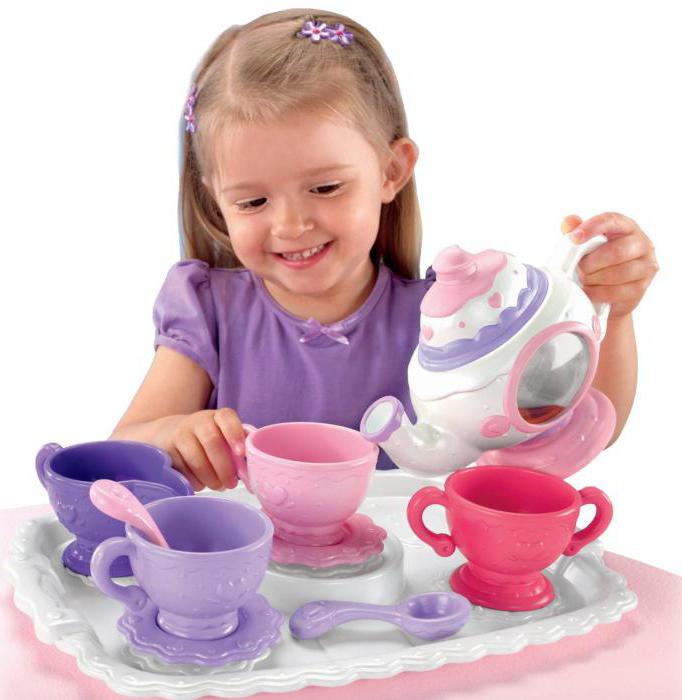 After the second birthday, regular black tea can be introduced into the baby’s diet. Parents will have to resist the temptation to pour their child an invigorating drink from their own mug. Children's tea should be very weak, light brown in color. Be sure to purchase loose tea leaves: tea bags are inferior in quality. At what age can a child be given tea if it contains taste-improving additives? Pieces of fruits, berries and useful herbs may be present in small quantities in children's first tea drink. Be sure to study the composition - there should be no chemical additives, as well as tannin and caffeine.
After the second birthday, regular black tea can be introduced into the baby’s diet. Parents will have to resist the temptation to pour their child an invigorating drink from their own mug. Children's tea should be very weak, light brown in color. Be sure to purchase loose tea leaves: tea bags are inferior in quality. At what age can a child be given tea if it contains taste-improving additives? Pieces of fruits, berries and useful herbs may be present in small quantities in children's first tea drink. Be sure to study the composition - there should be no chemical additives, as well as tannin and caffeine.
Milk tea
Can young children be given tea with milk? Most child nutrition experts agree that this drink is very beneficial for children over 2 years of age. The most important thing is to prepare this tea correctly. The correct ratio is 50/50; accordingly, half the glass must be filled with milk. Why is milk tea considered the most beneficial for children? Milk reduces the concentration of the brew and improves the taste of the drink. Milk tea is less dangerous for the baby's stomach and tooth enamel. In addition, milk neutralizes the effects of oxalic acid on the child’s body.
How to make tea for your baby?
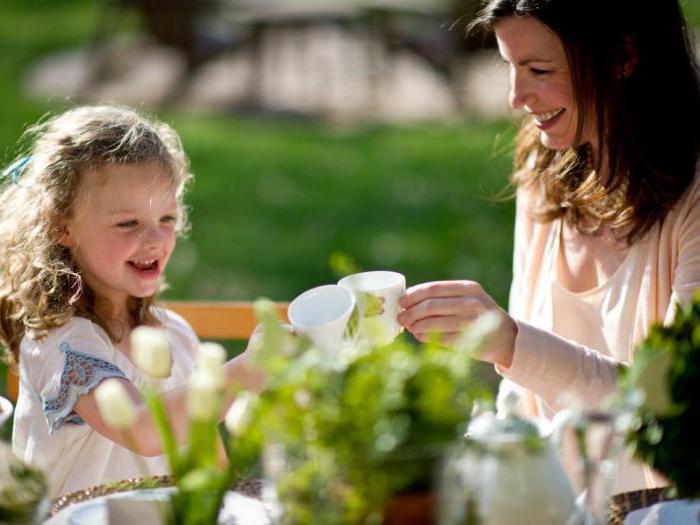 At what age can a child be given tea and what should be added to it? In Russia it is traditional to sweeten. Most adults are accustomed to drinking sweet tea. But for kids it is recommended to try giving the drink without additives. All children love sweets. But we must not forget that regular consumption of sugar can cause tooth decay and the formation of an incorrect taste. Experts were able to prove that sweetened tea is much less healthy than “fresh” tea without additives. If your baby enjoys drinking unsweetened tea, you can rejoice. But what to do when your child demands sugar? Look for a worthy alternative. Most often, sugar is replaced with honey. This option is suitable for children who do not suffer from allergies. At what age can a child be given tea with honey? It is advisable to wait three years. The first time, put just a little honey in the mug and try to track the reaction. For children under three years of age, pieces of fruit or berries can be added to tea to improve its taste. Some mothers dilute their baby tea with compote.
At what age can a child be given tea and what should be added to it? In Russia it is traditional to sweeten. Most adults are accustomed to drinking sweet tea. But for kids it is recommended to try giving the drink without additives. All children love sweets. But we must not forget that regular consumption of sugar can cause tooth decay and the formation of an incorrect taste. Experts were able to prove that sweetened tea is much less healthy than “fresh” tea without additives. If your baby enjoys drinking unsweetened tea, you can rejoice. But what to do when your child demands sugar? Look for a worthy alternative. Most often, sugar is replaced with honey. This option is suitable for children who do not suffer from allergies. At what age can a child be given tea with honey? It is advisable to wait three years. The first time, put just a little honey in the mug and try to track the reaction. For children under three years of age, pieces of fruit or berries can be added to tea to improve its taste. Some mothers dilute their baby tea with compote.
Chemical composition of conventional tea leaves
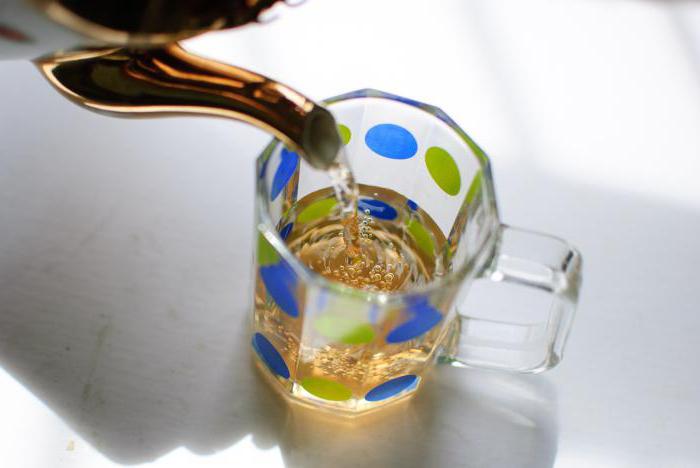 Regular black tea is an incredibly healthy drink. But some substances contained in it have a beneficial effect on the adult body and are completely useless for the child’s body. What does classic black tea contain? invigorates no worse than caffeine and binds salts heavy metals such as lead and mercury. It can be dangerous for children, as it destroys iron. There is also a high probability that tannin will have a negative effect on the fragile mucous membranes of the digestive system. Black tea contains purine bases that stimulate the production uric acid and oxalates. These substances can be dangerous to the kidneys of a very young child. Oxalic acid present in tea leaves is dangerous for baby’s baby teeth. Theine is an alkaloid found in black tea. This substance has a tonic effect and can interfere with the production of vitamin D. When asking the question “at what age can you give your child coffee and tea,” remember that these drinks affect the nervous system. Caffeine is generally not recommended for children under adolescence. But in some children, even drinking weakly brewed tea can cause hyperactivity and sleep disturbances. When introducing this drink into your child’s diet, be sure to monitor the child’s behavior and psycho-emotional state. If you notice any changes, stop giving the tea or try diluting it further.
Regular black tea is an incredibly healthy drink. But some substances contained in it have a beneficial effect on the adult body and are completely useless for the child’s body. What does classic black tea contain? invigorates no worse than caffeine and binds salts heavy metals such as lead and mercury. It can be dangerous for children, as it destroys iron. There is also a high probability that tannin will have a negative effect on the fragile mucous membranes of the digestive system. Black tea contains purine bases that stimulate the production uric acid and oxalates. These substances can be dangerous to the kidneys of a very young child. Oxalic acid present in tea leaves is dangerous for baby’s baby teeth. Theine is an alkaloid found in black tea. This substance has a tonic effect and can interfere with the production of vitamin D. When asking the question “at what age can you give your child coffee and tea,” remember that these drinks affect the nervous system. Caffeine is generally not recommended for children under adolescence. But in some children, even drinking weakly brewed tea can cause hyperactivity and sleep disturbances. When introducing this drink into your child’s diet, be sure to monitor the child’s behavior and psycho-emotional state. If you notice any changes, stop giving the tea or try diluting it further.
How to choose and brew tea for a child?
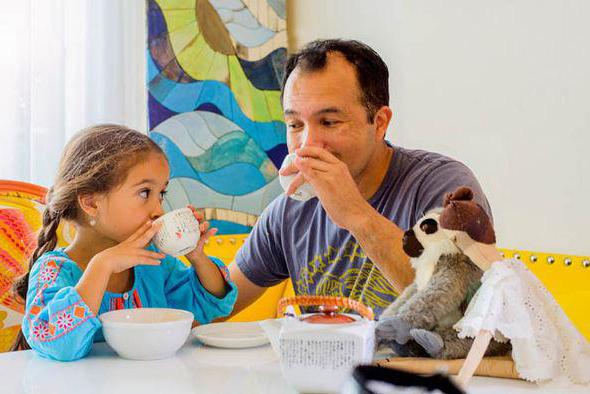 For baby food, tea should be of high quality and natural. It is advisable to use whole-leaf tea leaves. For one cup of tea, brew no more than 1-1.5 grams of dry mixture. Popular wisdom says: hot tea- medicine, cooled - poison. And this statement is confirmed scientific research. When cooled, some of the beneficial substances in tea are destroyed. It is recommended that children be taught to drink warm, freshly brewed tea. If the drink has cooled down, it cannot be reheated. By deciding to warm the tea, you will only increase the concentration of harmful substances in it. Don't force your child to drink a drink if he doesn't like it. You can replace tea in baby food with compote; a drink made from prunes is very useful.
For baby food, tea should be of high quality and natural. It is advisable to use whole-leaf tea leaves. For one cup of tea, brew no more than 1-1.5 grams of dry mixture. Popular wisdom says: hot tea- medicine, cooled - poison. And this statement is confirmed scientific research. When cooled, some of the beneficial substances in tea are destroyed. It is recommended that children be taught to drink warm, freshly brewed tea. If the drink has cooled down, it cannot be reheated. By deciding to warm the tea, you will only increase the concentration of harmful substances in it. Don't force your child to drink a drink if he doesn't like it. You can replace tea in baby food with compote; a drink made from prunes is very useful.
Exotic types of tea
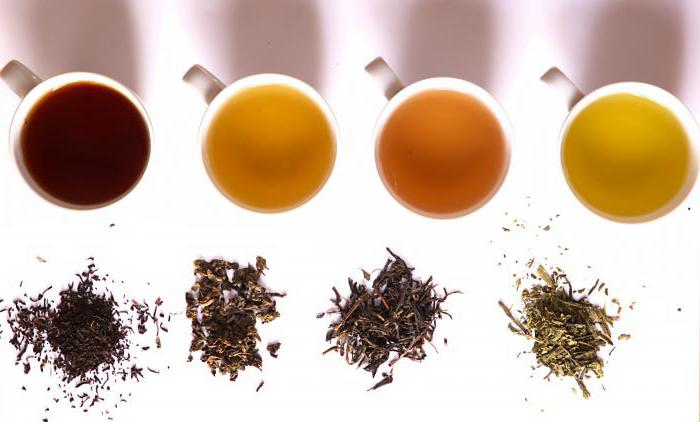 In our country, black tea is considered classic, but what other variations of the drink exist? Green varieties are considered the strongest and most invigorating. It is in them that the concentration of tannin and caffeine is highest. Some types of green tea surpass even coffee in their tonic properties. It is advisable to start giving this drink to your child only at adolescence. Many parents are wondering: at what age can you give your child hibiscus tea? This drink tastes more like compote. Hibiscus is rich in vitamins and citric acid. If the baby is not allergic to citrus fruits, he can be treated to this tea from the age of 2. Herbal teas, for example, from linden, mint and rosehip, can only be given as a drink from 6-7 years of age. In more early age Drinks like these are a cure for a cold. If the child really likes the herbal taste, you can add medicinal plants in small quantities to regular black tea. Now you know what kind of tea and at what age you can give your child. Try to follow these rules and do not forget to monitor the individual reaction of the child’s body to new drinks.
In our country, black tea is considered classic, but what other variations of the drink exist? Green varieties are considered the strongest and most invigorating. It is in them that the concentration of tannin and caffeine is highest. Some types of green tea surpass even coffee in their tonic properties. It is advisable to start giving this drink to your child only at adolescence. Many parents are wondering: at what age can you give your child hibiscus tea? This drink tastes more like compote. Hibiscus is rich in vitamins and citric acid. If the baby is not allergic to citrus fruits, he can be treated to this tea from the age of 2. Herbal teas, for example, from linden, mint and rosehip, can only be given as a drink from 6-7 years of age. In more early age Drinks like these are a cure for a cold. If the child really likes the herbal taste, you can add medicinal plants in small quantities to regular black tea. Now you know what kind of tea and at what age you can give your child. Try to follow these rules and do not forget to monitor the individual reaction of the child’s body to new drinks.
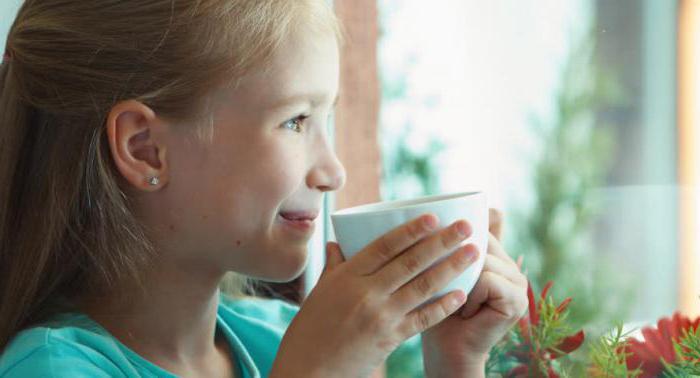 Start introducing tea into your child's diet gradually. Let it be one cup at first during breakfast. Can children drink tea like adults? At about 5-6 years old, you can pour your child a drink as often as he wishes. Still, you shouldn't give it right before bed. Remember: tannins in tea can accumulate throughout the day. If your baby “suddenly” becomes nervous and hyperexcitable, it may be because there is too much of an invigorating drink in his diet. At what age can a child be given tea is an individual question. Make sure that the baby is absolutely healthy and developing normally, and only after that start introducing this drink into his diet, but provided that the child is already 2 years old.
Start introducing tea into your child's diet gradually. Let it be one cup at first during breakfast. Can children drink tea like adults? At about 5-6 years old, you can pour your child a drink as often as he wishes. Still, you shouldn't give it right before bed. Remember: tannins in tea can accumulate throughout the day. If your baby “suddenly” becomes nervous and hyperexcitable, it may be because there is too much of an invigorating drink in his diet. At what age can a child be given tea is an individual question. Make sure that the baby is absolutely healthy and developing normally, and only after that start introducing this drink into his diet, but provided that the child is already 2 years old.
Despite the fact that tea for infants is not a mandatory or even recommended part of the diet, many parents quickly introduce it to the baby’s menu. This is often explained by the desire to quickly introduce the baby to the traditional family drink. In addition, there are cases when a baby has certain problems that can be eliminated with the help of a composition prepared on the basis of special mixtures.
The most common questions that deserve special attention are: at what age is it best to introduce the drink, and how safe is it to give babies a traditional liquid brewed with green or black tea.
Arguments for and against regular tea
According to pediatricians, regular teas are not suitable for infants, regardless of the age at which they are introduced. This is explained by the following arguments:
- Such preparations contain tannins, or tannins. They have a destructive effect on iron molecules, which leads to a decrease in hemoglobin levels. At the same time, they also reduce appetite and irritate the delicate gastric mucosa. Moreover, green tea often contains these components in much larger quantities than black tea.
- Oxalic acid spoils a child’s tooth enamel that has not yet fully formed, causing the development of caries.
- Caffeine, which is also quite abundant in store-bought tea, regardless of the type, negatively affects the condition of children's hearts and blood vessels.
Advice: It is strictly forbidden to give your child a drink made from so-called sachets. Typically, such a mass does not even contain real tea leaves, only a residual product that contains a maximum of harmful components and almost no useful substances.
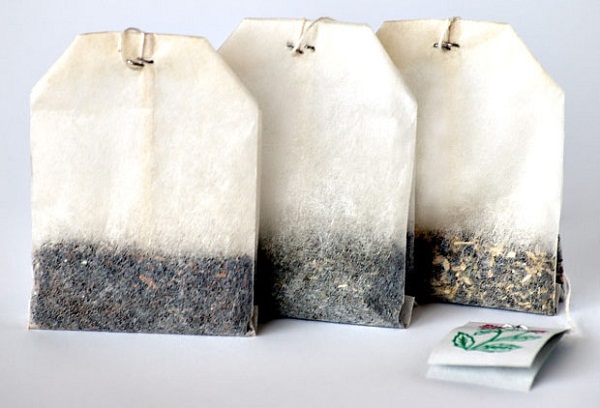
Among the most common consequences that black or green tea offered to a child before he reaches a conscious age can cause are hyperactivity, a tendency to allergies, sleep problems, and memory loss. Some of these phenomena will appear only after some time, as a result of the gradual accumulation harmful products in tissues.
On the other hand, when certain conditions are met, children can also be given an “adult” product, but this only applies to absolutely healthy children:
- The child has already reached the age of 1.5-2 years.
- The daily volume of the drink does not exceed 100-150 ml.
- We start with herbal, fruit and berry or black varieties. Green tea should be the last one.
- We make the tea leaves as light a color as possible.
- It is recommended to add milk to the liquid (proportion 1:1). This will neutralize potentially dangerous substances and compounds.
- We do not add sugar, honey and lemon to tea for children!
- Green tea has a pronounced tonic effect. It can be given to children only in the morning, otherwise disturbances in daytime or nighttime sleep are guaranteed.
And yet, the best option for tea drinks in the first months of life will be children's analogues, developed taking into account all the characteristics of a growing organism.
Ready-made formulations for infants, which we buy at the pharmacy
Today in pharmacies and specialized stores you can find simple and multi-component herbal preparations that not only have a pleasant taste and aroma, but also have a number of therapeutic effects. Some purposefully strengthen teeth and bones, others improve the condition of blood vessels and heart muscle, and others have general strengthening properties. Some products contain both plant and fruit components. Making tea from them for a child is much easier than mixing the mixture yourself, especially when there is sorely not enough time for everything.
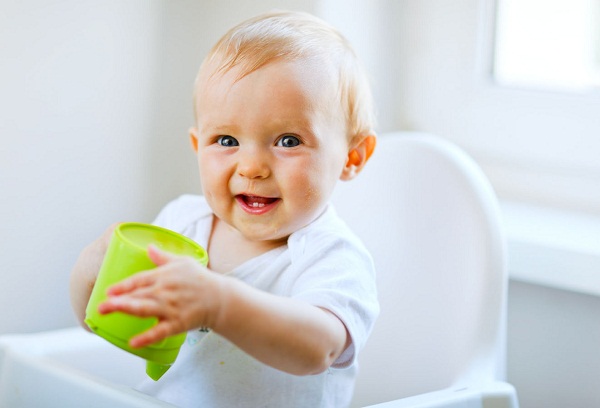
Choosing suitable product, you need to pay attention to its composition. The high-quality mass does not contain preservatives, dyes, artificial flavors and GMOs. It's good if it doesn't contain gluten or sugar. The finished drink should be given to the child as soon as it has cooled to the desired temperature. It is not recommended to brew the product a day in advance; children's teas should always be fresh. Opened packaging with tea leaves should be used within 2-3 months, after which it is better to throw away the remainder.
Effective teas with therapeutic effects for children under one year of age
For the first 28 days of life, the baby does not need to be offered anything other than breast milk. After this period, water is introduced, the rest of the additional drink can be postponed until the introduction of the first complementary foods. Particularly popular among mothers are medicinal teas, which are offered to the child in response to any malfunctions in the body. In this case, you must pay attention to the age of the baby:
- Fennel. Copes perfectly with such troubles as flatulence, colic, dysbacteriosis. If you regularly give your baby 50-70 ml of drink per day, you can quickly correct the situation without resorting to drug treatment. It can be introduced into the diet from the first month of life.
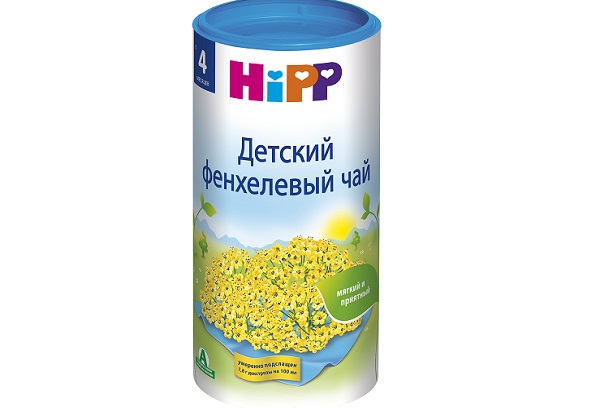
Tip: When the child is on breastfeeding, they give him tea only from a spoon. Otherwise, the baby may refuse the breast, from which it is much more difficult to obtain food than from the nipple.
- Chamomile decoction. Strengthens the immune system, allows you to quickly cure colds, and helps solve problems with the gastrointestinal tract. Used from 4 months. The daily dose can be increased to 150-200 ml.
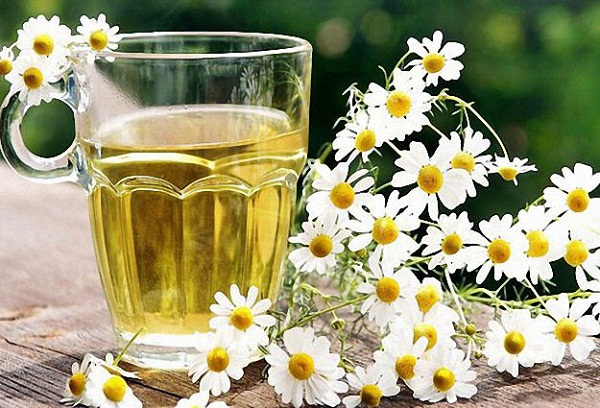
- Linden, Melissa. Great for soothing gums as teeth begin to emerge. It is recommended to use from 4-5 months in a standard amount.
- Rosehip and raspberry. Very light, but quite effective. They are used separately and in combination, no earlier than the child is 5-6 months old.
- Wild berries. An excellent general health drink, which is recommended to be given to children prone to various colds. The optimal time to start is 7-8 months. The daily volume of liquid can already be 250 ml.
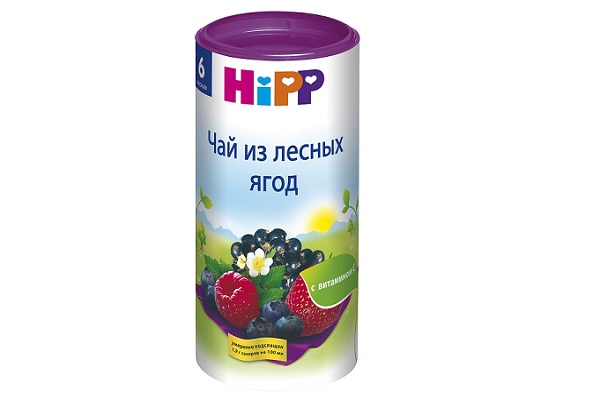
Children's teas with a calming effect deserve special attention. In this case, it is better to give preference to drinks that contain birch leaves, rose hips, licorice, motherwort, mint and lavender. Linden blossom, chamomile and lavender enhance the severity of the therapeutic effect of the listed components.
How to make medicinal tea for babies with your own hands?
Despite the responsible attitude of modern manufacturers to the creation of specialized drinks for infants, it is still better to give a child an absolutely natural product prepared at home. The main ingredients can be those collected independently or purchased at a pharmacy.
- Rose hip tea. It has a pronounced calming effect, strengthens the immune system, relieves gum inflammation, and promotes hematopoiesis. It is best given to children 2-3 times a day within the age-appropriate dose, immediately before meals. To prepare the drink, you need to chop the rose hips, pour two tablespoons of the product into two glasses of water and place in a water bath. After boiling, let the product sit for 15 minutes, then remove and leave at room temperature for at least an hour. Strain through two layers of gauze.
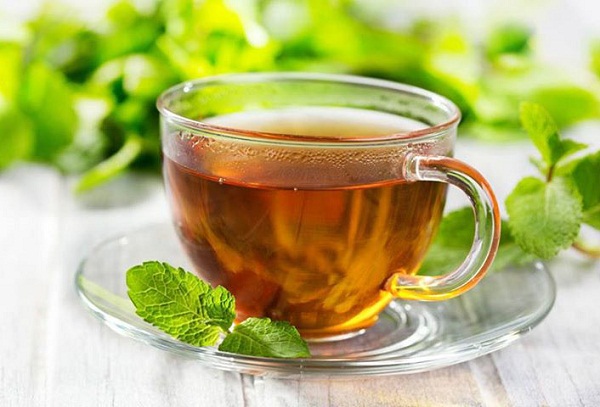
- Mint tea. In addition to the well-known calming effect, it has a mild diuretic and laxative effect, and relieves bloating. Pour a pinch of fresh or dried mint into a glass of boiling water and wait no more than 10 minutes. Strain the liquid, dilute it with drinking water twice so that the product is not too strong, and cool a little more if necessary.
When offering tea to your child, you must carefully monitor his well-being. In case of any negative manifestations, it is better to give up the drink for a while and return it to the diet no earlier than after 2-3 weeks.
Check out the article about
